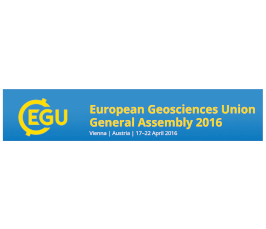European Geosciences Union General Assembly 2016
- Start: Apr 17, 2016
- End: Apr 22, 2016
- Location: Vienna, Austria
- Host: Markus Reichstein, Sönke Zaehle, Nuno Carvalhais

April 18 2016
Convener: Markus Reichstein
The response of ecosystems to climate variability and extremes is one of
the great uncertainties in predicting future Earth system dynamics.
Decades of research have identified many cornerstones of a complex
feedback loop between climate, atmosphere and vegetation.
This session will describe responses of biogeochemical cycles at
ecosystem and landscape scale to climate extremes and variability, and
identify related feedback mechanisms from the biosphere to the climate
system. We welcome conceptual, observational, experimental and modeling
approaches, and studies from the local to the global scale.
BG2.8 Developments in terrestrial biogeochemical models using model-data integration
April 20 2016
Convener: Nuno Carvalhais
To understand and appropriately describe the biosphere-atmosphere
exchanges of water, energy, carbon and other elements is fundamental in
diagnosing and forecasting future Earth system states and dynamics. The
uncertainties underlying processes are still very significant, as is
demonstrated e.g. by the poor ability of Earth system models to describe
terrestrial ecosystem dynamics at multiple temporal and spatial scales.
With this session we aim at bringing together contributions that focus
on integrating models and multiple sources of observations, ranging from
in-situ to satellite measurements, to advance our understanding of
terrestrial ecosystem functioning from the local to the global scale.
BG2.16 Plant traits and biogeochemical cycles
April 20 2016
Co-convener: Markus Reichstein, Sönke Zähle
Plant traits extend the range of earth observations to the level of
individual organisms, providing a link to ecosystem function and
modeling in the context of rapid global changes. However, overcoming the
differences in temporal and spatial scales between plant trait data and
biogeochemical cycles remains a challenge. This session will address
the role of plant species, biodiversity and adaptation / acclimation in
the biogeochemical cycles of water, carbon, nitrogen and phosphorus.
BG4.9 Mapping, Monitoring & Modelling of Vegetation Characteristics using Earth Observation
April 22 2016
Co-convener: Nuno Carvalhais
Remote sensing, be it in the form of satellite imagery or aerial
photography from manned aircrafts or UAVs, has proven its potential as a
unique tool for retrieving vegetation properties at the local, the
regional and global scales. Over the last decades, a substantial amount
of work has been allocated to the retrieval of vegetation
characteristics. ...However, the use of remote sensing for mapping,
monitoring or modelling vegetation characteristics is clearly not
problem-free: quite the contrary. Within this context, we welcome
studies that present novel approaches of mapping, monitoring and
modelling vegetation characteristics. We endeavour this session to
provide the platform for the analysis of the benefits as well as the
pitfalls of using aerial photography, UAVs, LiDAR, Radar, hyperspectral
or multi-spectral satellite data in this field.